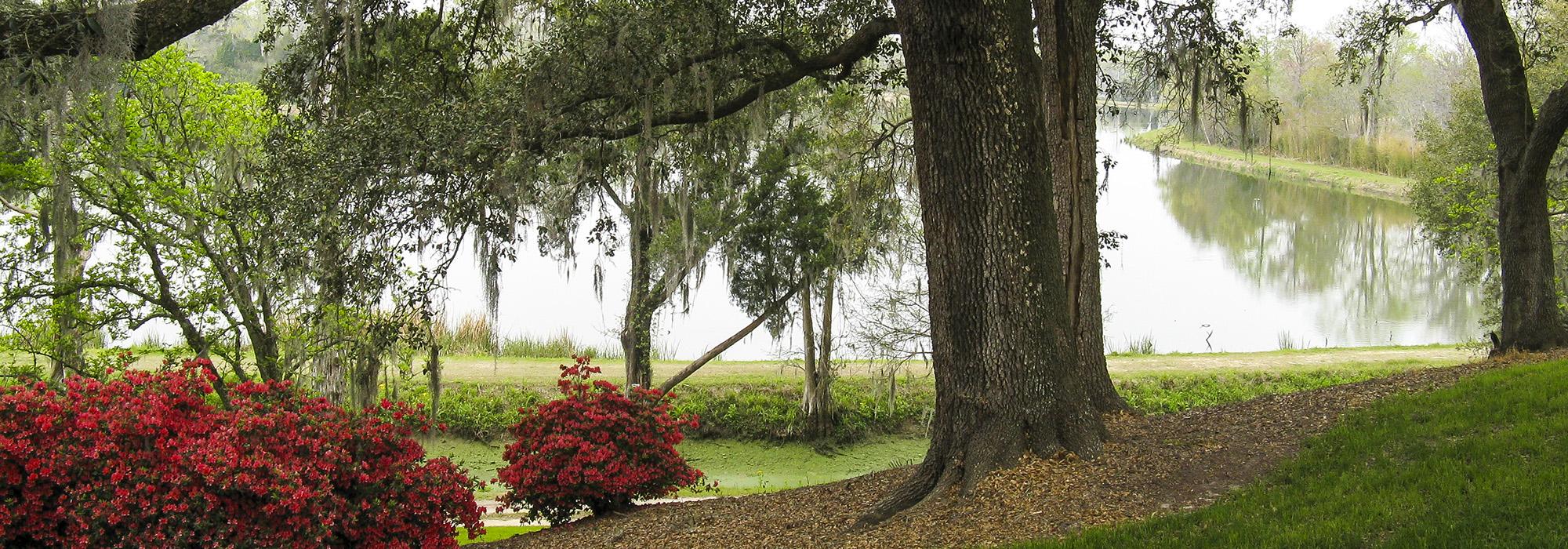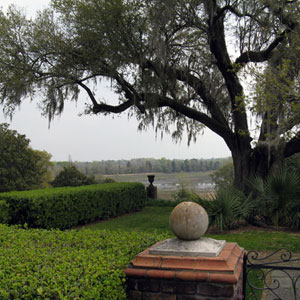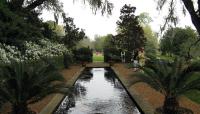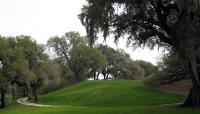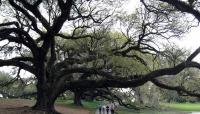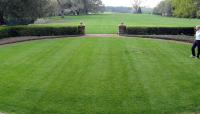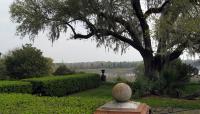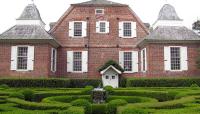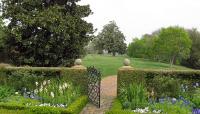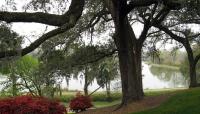Landscape Information
Located thirty miles north of Charleston, Mulberry Plantation was built circa 1714 by Thomas Broughton, Royal Governor of South Carolina. Named for the mulberry trees grown for silk production there, the estate also produced indigo and rice. Mulberry was purchased in 1915 by Clarence W. Chapman, who selected the English architect Charles Brendon to restore the house and hired Loutrel Briggs in 1930 to design the grounds. The historic character of the house and the site’s natural beauty on an elevated bluff overlooking old rice fields and the Cooper River served as inspiration for Briggs’ design - a series of gardens on three separate levels.
Located on the east side of the house, the gardens begin with a simple boxwood parterre with two brick terraces on either end, enclosed by decorative iron grills which permit unrestricted views of the river. From there, several paths extend down a gentle slope to an informal camellia garden. The lower garden’s central circular lawn is surrounded by flowering shrubs, with decorative ironwork, statuary, and a wall fountain for additional visual interest. Several walks extend from the lower garden to the river and old canal. Brigg’s design also includes a formal motor court consisting of loose gravel within a brick border, enclosed by selectively-placed square brick piers and a clipped pittosporum hedge with native cedars at the corners. The property was listed on the National Register of Historic Places in 1966.



